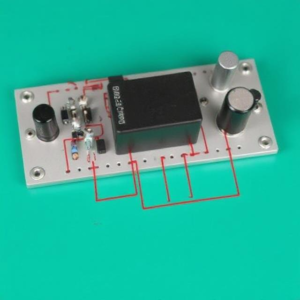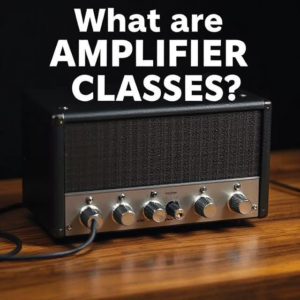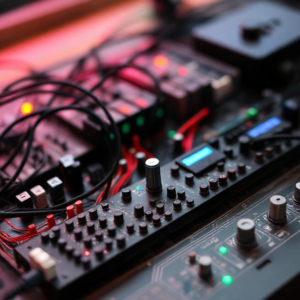Low Power Operational Amplifiers (Op-Amps) are special types of op-amps designed to consume very little energy while still performing their essential tasks, like amplifying signals, in electronic circuits. They are important in battery-powered devices or systems where energy efficiency is crucial.
Let’s break it down in a simple way:

1. What is an Operational Amplifier (Op-Amp)?
An Op-Amp is a basic electronic component used to amplify weak electrical signals. Think of it like a microphone that takes in a small sound and makes it louder. In electronics, the Op-Amp does this for voltage signals.
Op-Amps are used in:
- Audio equipment
- Signal processing
- Measurement systems
- Control systems
2. What Makes Low Power Op-Amps Special?
Regular Op-Amps can sometimes consume a lot of power, especially when amplifying signals over long periods. Low power Op-Amps, as the name suggests, are specifically designed to use much less energy. This is important in devices like battery-powered sensors, portable medical devices, wearables, or IoT (Internet of Things) devices, where long battery life is essential.
3. Why is Low Power Important?
When designing systems that run on batteries or limited power sources, every bit of energy counts. Using low-power components helps to extend the battery life of the device. For example, a medical device that uses sensors or a fitness tracker needs to run on a small battery for as long as possible, so low-power Op-Amps are a great choice for these kinds of products.
4. How Do Low Power Op-Amps Work?
Low power Op-Amps work just like regular Op-Amps but with special designs that minimize the power they consume:
- Reduced Voltage: They can operate with lower supply voltages, which means less energy is used.
- Lower Current Consumption: They use less current while amplifying signals.
- Optimized Circuit Design: They use efficient internal circuitry that consumes minimal power while still performing well in amplifying signals.
5. Features of Low Power Op-Amps
- Low Supply Voltage: They can work with voltages as low as 1.8V or 2.5V (compared to regular Op-Amps that might need 5V or higher), making them suitable for small battery-powered devices.
- Low Quiescent Current: This is the current the Op-Amp uses when it’s not amplifying anything (idle state). Low-power Op-Amps have a very low quiescent current, meaning they don’t waste energy when they’re not doing anything.
- Fast Switching: Many low-power Op-Amps are designed to still work fast enough for high-speed applications, even though they use less power.
- Low Noise: They’re also designed to reduce noise, so they can amplify weak signals without introducing unwanted interference.
6. Applications of Low Power Op-Amps
Low-power Op-Amps are used in many devices that need to be energy-efficient:
- Battery-Powered Devices: Items like portable audio systems, wireless sensors, or hearing aids, where long battery life is critical.
- Wearables: Devices like fitness trackers or smartwatches use low-power Op-Amps to measure things like heart rate or movement.
- Medical Equipment: For example, low-power Op-Amps are used in small medical devices like glucose monitors or pacemakers that need to operate continuously on limited power.
- IoT Devices: Many Internet of Things devices, like smart home sensors or environmental monitors, need low power to work for long periods on small batteries.
- Wireless Communication Devices: Low-power Op-Amps are used in wireless gadgets where they help amplify signals without draining the battery quickly.
7. Examples of Low Power Op-Amps
Some popular low-power Op-Amp models include:
- LM358: A classic, low-power Op-Amp that is widely used in many applications.
- TLV2372: A low-power Op-Amp with very low current consumption, often used in portable devices.
- OPA2333: A low-power, precision Op-Amp with a very low quiescent current, great for sensitive measurements in battery-powered devices.
8. Advantages of Low Power Op-Amps
- Extended Battery Life: The main benefit is that they extend the life of battery-powered systems.
- Energy Efficiency: They help make electronic devices more energy-efficient, saving power in systems that don’t need to use a lot of energy.
- Compact Design: These Op-Amps often have smaller designs, making them ideal for small, portable devices.
- Low Heat Generation: They generate less heat because they use less power, reducing the need for complex cooling systems.
9. Disadvantages of Low Power Op-Amps
- Limited Performance: In some cases, to save power, low-power Op-Amps may not offer the same high performance in terms of speed or precision as regular Op-Amps. However, for many applications, the trade-off is worth it.
- Sensitivity to Voltage: Some low-power Op-Amps may not work well if the voltage supply is too low, which can limit their use in certain situations.
Summary
Low Power Operational Amplifiers (Op-Amps) are specialized Op-Amps that are designed to use less energy while still amplifying signals effectively. They are essential in devices that need to conserve battery life, such as portable medical equipment, wearable tech, and IoT devices. By using efficient circuit design, low power supply voltage, and reduced current consumption, these Op-Amps help extend the battery life of electronic devices without sacrificing performance.
Keywords: (Op-Amps), Electronics, Op-Amps
Keywords: (Op-Amps), Electronics, Op-Amps











